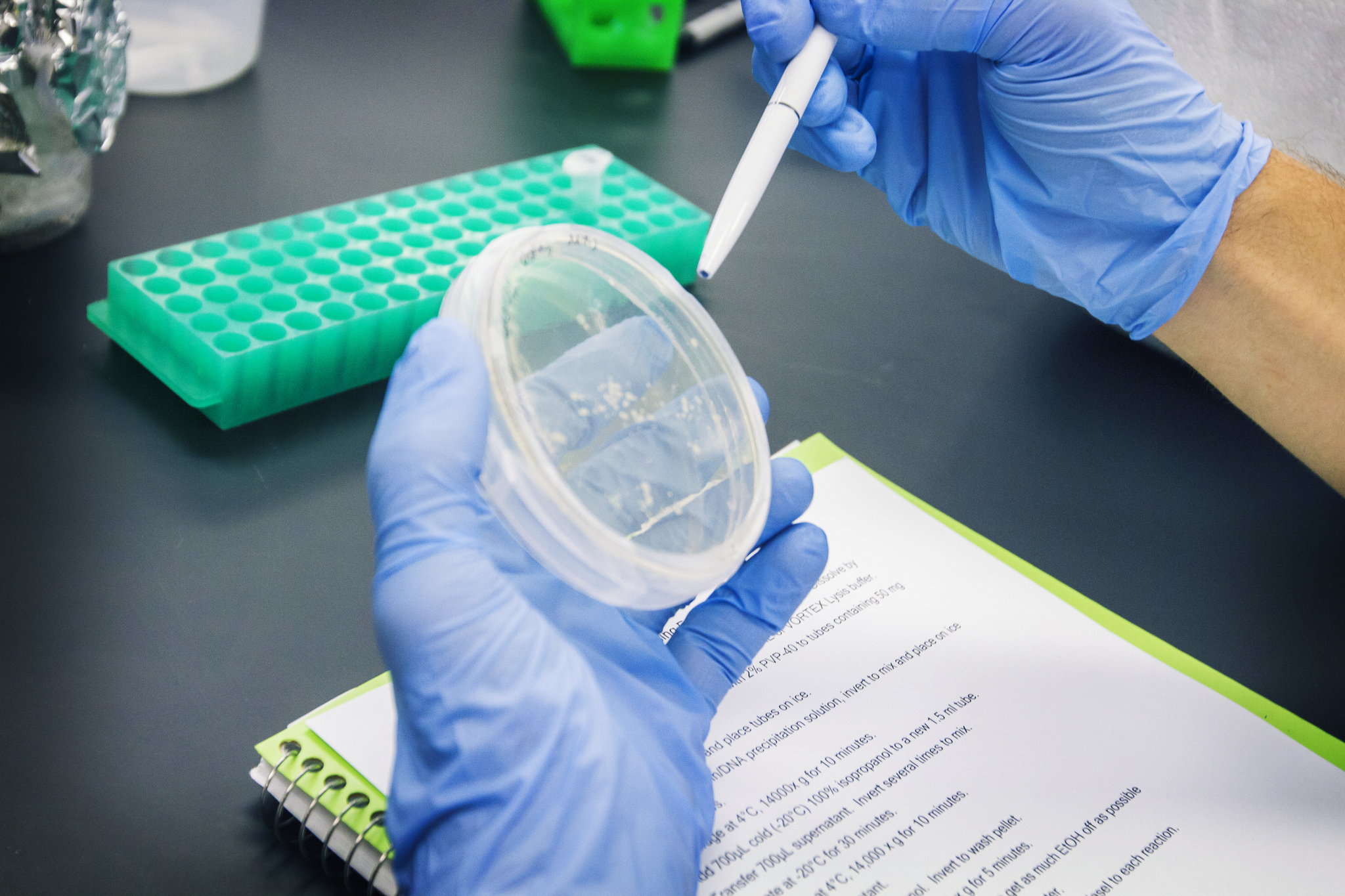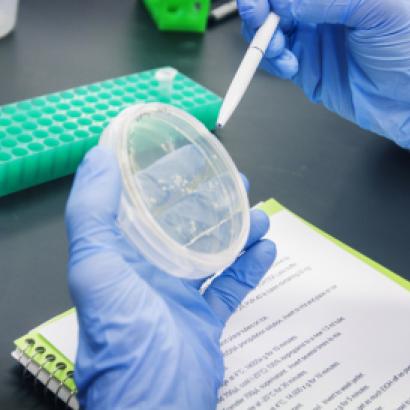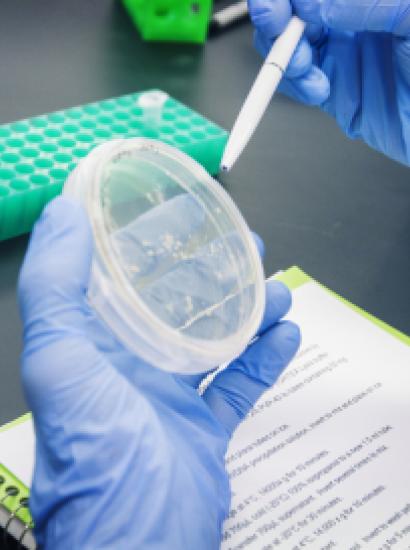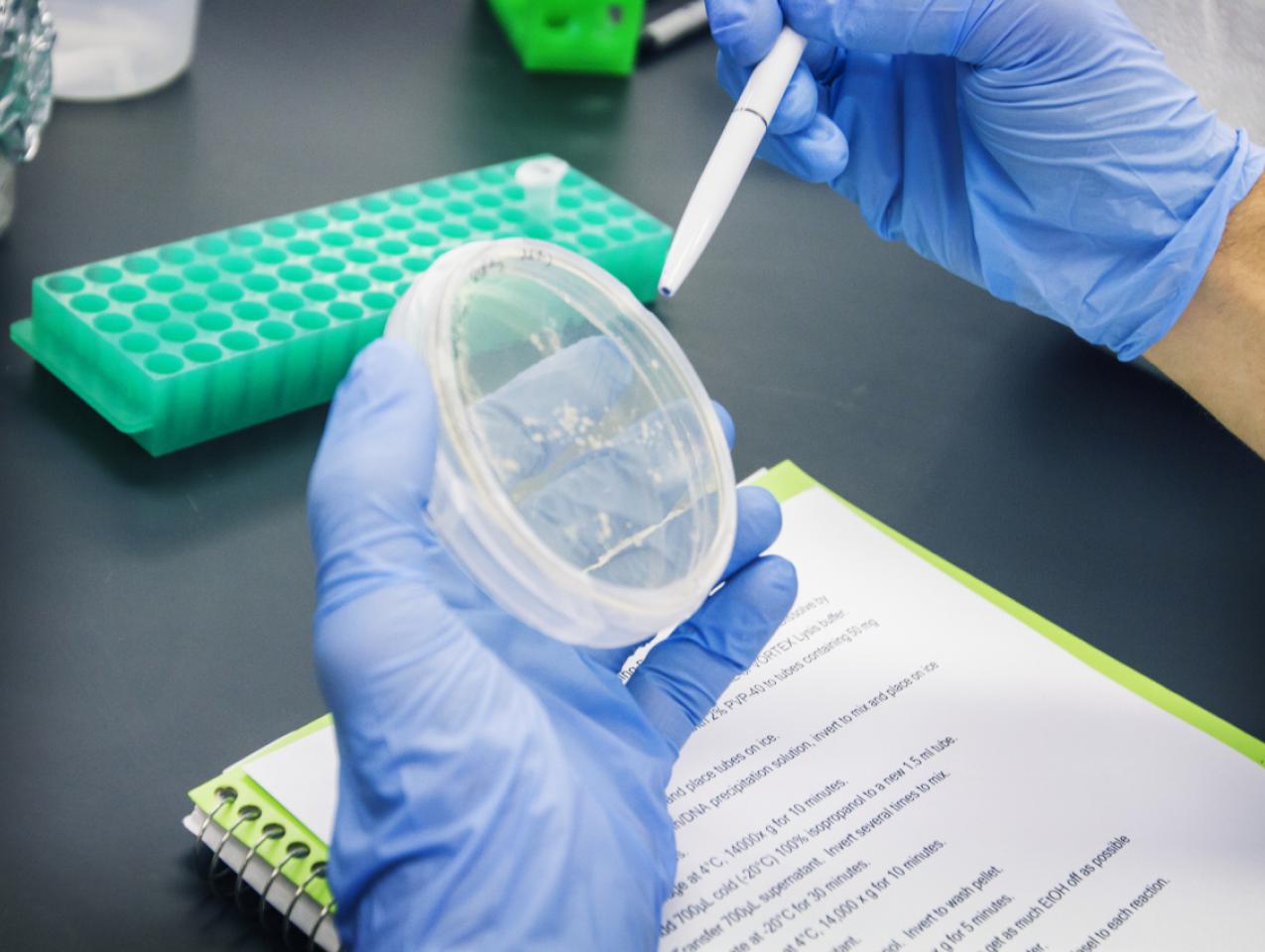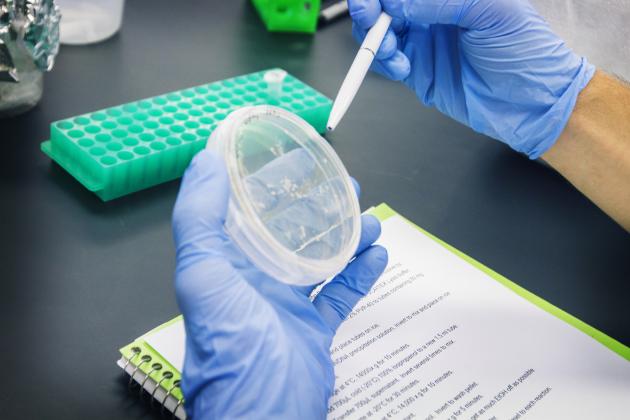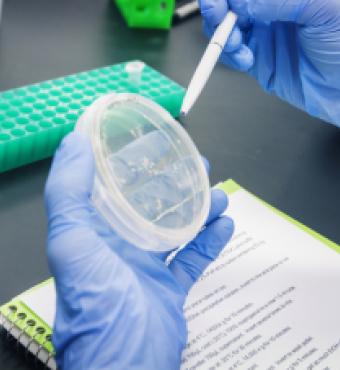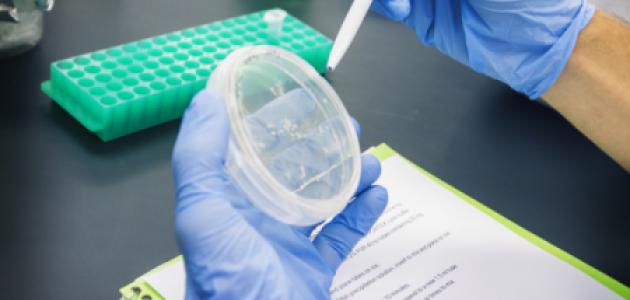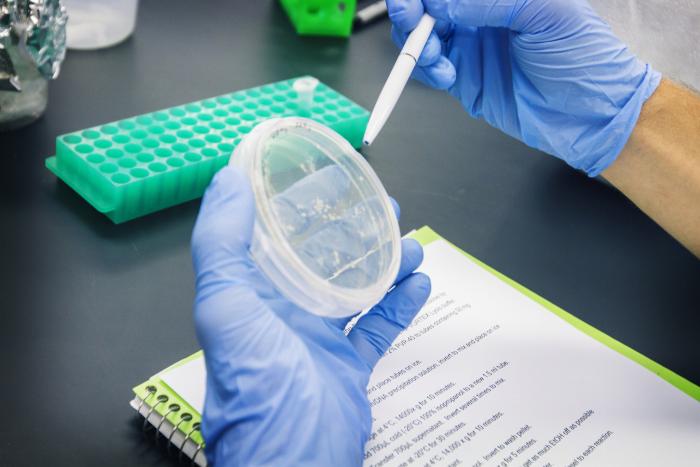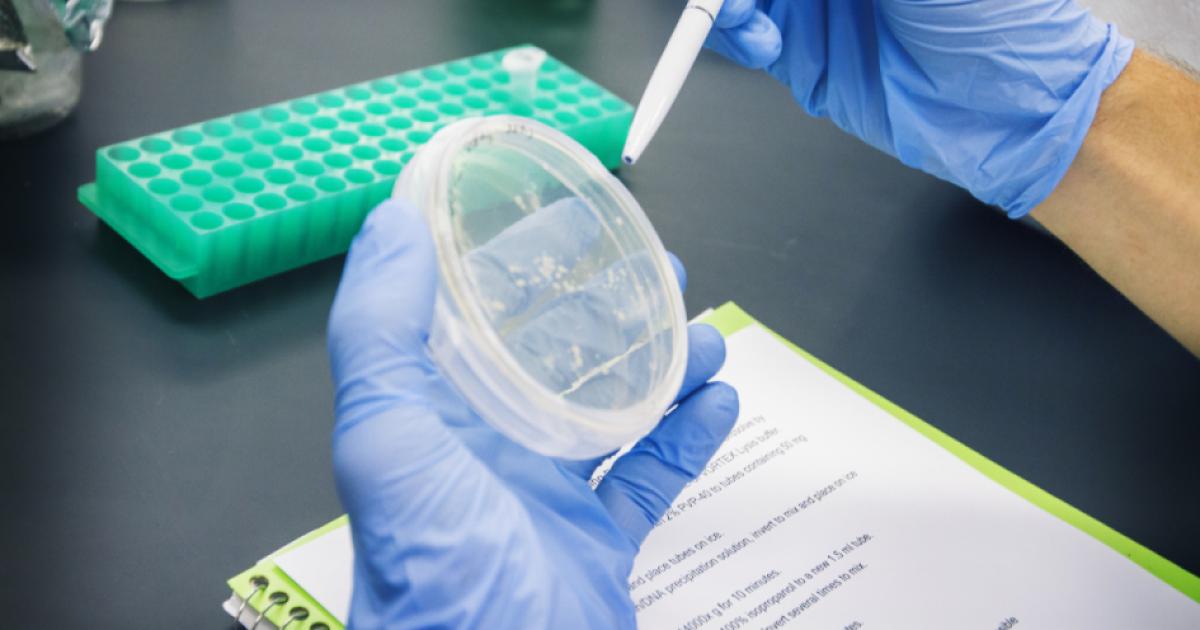- Energy & Environment
Peter Thiel—entrepreneur, venture capitalist, hedge fund manager and Silicon Valley icon—understands the essence of progress. In his provocative new book, “Zero to One,” Thiel emphasizes that the key to America’s continued economic success is “vertical” or “intensive” advances marked by innovation, rather than “horizontal” or “extensive” progress. Important new technology trends come, Thiel believes, from new entrepreneurial ventures. “From the Founding Fathers in politics to the Royal Society in science to Fairchild Semiconductor’s ‘traitorous eight’ in business,” Thiel writes, “small groups of people bound together by a sense of mission have changed the world for the better.” Thiel’s arguments are starkly illustrated in the realm of biotechnology, where government regulations have for years prevented or delayed such innovation—and the economic growth spawned by it.
Genetic engineering of plants, animals, and microorganisms using molecular techniques began during the 1970s. But with the notable exception of the production of biopharmaceuticals—beginning with the marketing of human insulin in 1982 and now accounting for more than 20 percent of U.S. drug expenditures—genetic engineering has failed to realize anything approaching its potential. Consistent with Thiel’s model, the first generation of biopharmaceutical companies, which included Amgen, Genentech, and Chiron (now part of Novartis) were founded by a handful of visionary scientists and entrepreneurs.
But in spite of the spate of early success stories in biopharmaceuticals, progress has been disappointing in other sectors. The reason for the shortfall is obvious to scholars who study the effects of government regulation on science and technology: In certain sectors of research and development, federal regulators and their political masters seem to have done everything in their power to prevent U.S. researchers and companies from creating the Next Big Things, the equivalents of the manufacturing assembly line, desktop computer, or smart phone.
In the beginning, the feds tried to do the right thing. In 1986 the White House Office of Science and Technology Policy published a policy statement on the regulation of biotechnology that focused oversight and regulatory triggers on the risk-related characteristics of products, such as plants’ weediness or toxicity. That approach specifically and emphatically rejected regulation based on the particular process used for genetic modification, which, in fact, has been performed for centuries by a continuum of techniques.
In 1992, a second policy statement from the federal government reaffirmed the overarching principle of biotechnology regulation: The degree and intrusiveness of oversight, it said, “should be based on the risk posed by the introduction and should not turn on the fact that an organism has been modified by a particular process or technique.”
There was (and is) a broad consensus in the scientific community—reflected in those early statements of federal government policy—that the newest techniques of genetic modification are essentially an extension, or refinement, of older, less precise and less predictable ones and that oversight should focus on the characteristics of products, not on the processes or technologies that produced them.
Presented with the opportunity to create new bureaucracies and boost their budgets, however—and supported by the big agribusiness companies, who knew that a high regulatory bar would discourage competition from startups—the regulatory agencies demurred. They decided instead to torture their statutes in order to create new regulations that focused specifically on the most precisely and predictably crafted new products while exempting others, regardless of potential risk.
Consider the U.S. Department of Agriculture’s regulation of genetically engineered plants, for example. A basic tenet of regulation of any kind is that the degree of regulatory scrutiny should be proportionate to the perceived risk of the product or activity. For a genetically engineered plant, risk is a function of certain characteristics of the parental plant (weediness, toxicity, ability to outcross, etc.) and the introduced gene(s). The function of the newly introduced genetic material is critical, not its source or the method used to introduce it. But for a quarter century, plants made with the best, most precise and predictable techniques—and posing the least risk—have been subjected to the most intensive regulation. The costs of compliance with superfluous regulation have been estimated to be between 6 and 35 million dollars for each new variety.
The USDA’s Animal and Plant Health Inspection Service had long regulated the importation and interstate movement of organisms (plants, bacteria, fungi, viruses, etc.) that are “plant pests,” as defined in an inclusive list. This is essentially a binary “thumbs up or thumbs down” approach: A plant that an investigator might wish to introduce into the field was either on the inclusive, prohibited list of plants pests—and therefore required a permit—or it was exempt. This straightforward approach is risk-based, in that the organisms required to undergo case-by-case governmental review are in an enhanced-risk group—organisms that can injure or damage plants—compared to organisms not considered to be plant pests.
However, intent on building a regulatory empire, USDA heeded neither the consensus of the scientific community nor the directives from the White House. The resulting unscientific, stultifying regulation has inhibited research and development, particularly in public institutions, ever since, and has provided an endless source of various kinds of mischief, including superfluous, obstructive government bureaucracies; wasteful spending on poorly-conceived risk-assessment research; vandalism of field trials; bad-faith legal harassment by activists; and endless nattering by the uninformed and the ideological.
Characteristically, the Environmental Protection Agency has been the worst of all the regulatory agencies. The EPA’s regulation under the Toxic Substances Control Act focuses on any “new” organism (strangely and unscientifically defined as one which contains combinations of DNA from unrelated sources) that might, for example, literally eat up oil spills. For the EPA, ”newness” is synonymous with risk, and because genetic engineering techniques can easily be used to create new gene combinations with DNA from disparate sources, these techniques therefore “have the greatest potential to pose risks to people or the environment,” according to the agency press release that accompanied the rule.
That’s like arguing that newer, more comfortable automobiles with additional safety appurtenances are actually more dangerous, because people are likely to drive them longer distances. But science says otherwise. The genetic technique employed to construct new strains is irrelevant to risk, as is the origin of a snippet of DNA that may be moved from one organism to another. What matters is its function.
Scientific principles and common sense dictate which questions are central to risk analysis for any new organism. How hazardous is the organism you started with? Is it a harmless, ubiquitous organism found in garden soil, or one that causes serious illness in humans or animals? Does the genetic change merely make the organism able to degrade oil more efficiently, or does it have other effects, such as making it more resistant to antibiotics and therefore difficult to control?
Under the Federal Insecticide, Fungicide and Rodenticide Act (FIFRA), the EPA had long regulated field tests and the commercial uses of pesticides. But in 2001, the EPA issued final rules for the regulation of genetically engineered plants and concocted a new concept—“plant-incorporated protectants,” or PIPs, defined as “pesticidal substances produced and used by living plants.”
All plants in fact produce pesticidal substances or they would not survive in nature, but the EPA regulatory net captures pest-resistant plants only if the “protectant” has been introduced or enhanced by the most precise and predictable techniques of genetic engineering. The registration process is excessively complex and burdensome. The submission required for regulatory review includes copious data on the parental plant, the genetic construction, the behavior of the test plant and so on—requirements that could not be met for any plant modified with older, cruder techniques, which are exempt from the FIFRA rules. The EPA then conducts a series of redundant case-by-case reviews: before the initial trial; when trials are scaled up or tested on additional sites; and again if even minor changes have been made in the genetic construct.
Those reviews are then repeated when the sponsor is ready to cultivate the plants at a commercial scale.
This approach, which has been condemned repeatedly by the scientific community over many years, has discouraged innovation and provided incentives for the developers of new plant varieties to use inferior but unregulated techniques. This situation is inimical to the kind of innovation Thiel postulates is essential to the United States’ continued economic growth.
Let’s not neglect the FDA, which, abetted by senior officials in the Obama White House, has been among the worst obstructers of technological progress. Consider what they have inflicted on a genetically engineered Atlantic salmon, which differs from its wild cohorts only by reaching maturity about 40 percent faster, as the result of the addition to its genome of a growth hormone gene from the Chinook salmon and a regulatory sequence from the ocean pout. Flawed policy and political corruption have destroyed an entire once-promising biotech sector.
It took FDA more than a decade just to decide how they would regulate the AquAdvantage salmon. Characteristically, they decided on the most onerous pathway, regulating the new construct in genetically engineered animals as though it were a veterinary drug, similar to a flea medicine or pain reliever. After several years of deliberation, regulators concluded as early as 2012 that the AquAdvantage Atlantic salmon has no detectable differences and that it “is as safe as food from conventional Atlantic salmon.” And because the fish will all be sterile females and farmed inland, there is negligible possibility of any sort of “genetic contamination” of the gene pool or other environmental effects. (Even in a worst-case scenario, these coddled, farmed fish are maladapted to compete in the wild.)
When the FDA completed its Environmental Assessment in April 2012 and was ready to publish it—the last necessary hurdle before approving the salmon for marketing—the White House mysteriously intervened. The review process vanished from sight until December of that year, when the FDA was finally permitted to publish the EA (the unsurprising verdict: “no significant impact”), which should then have gone out for a brief period of public comment prior to approval.
The reason for the delay in the FDA’s publishing the needed Environmental Assessment was exposed by science writer Jon Entine. He related that the White House interference “came after discussions [in the spring of 2012] between Health and Human Services Secretary Kathleen Sebelius’ office and officials linked to Valerie Jarrett at the Executive Office [of the President], who were debating the political implications of approving the [genetically modified] salmon. Genetically modified plants and animals are controversial among the president’s political base, which was thought critical to his reelection efforts during a low point in the president’s popularity.”
There’s another sordid influence obstructing the machinery of government. According to several independent, reliable sources, the continued delay in the approval of the AquAdvantage salmon is due to opposition to it from assistant White House chef Sam Kass. A chef who has a bachelor’s degree in history influencing critical governmental regulatory decisions that are typically made by a team of Ph.D. scientists and professional regulators? What’s next: the Obamas’ podiatrist deciding whether a new Alzheimer’s drug or Hepatitis C vaccine should be approved?
The FDA has also unnecessarily and inexplicably delayed small-scale field trials of mosquitoes genetically engineered to control disease-causing mosquitoes. The mosquitoes to be released are males (which do not bite) engineered to contain a specially constructed gene designed to kill their offspring after they mate in the wild. The mosquitoes have been extensively tested in a half-dozen other countries and are approved for commercial use in Brazil, so the delay in the United States is presumably political, reflecting the disdain in the White House for genetic engineering.
Regulatory incentives and disincentives are potent. The vastly inflated development costs caused by over-regulation are the primary reason that more than 99 percent of genetically engineered crops that are being cultivated are commodity crops grown at huge scale—corn, cotton, canola, soy, alfalfa, and sugar beets. Hawaiian papaya is one of the few examples of significant acreage being devoted to a genetically engineered “specialty crop.”
The once-promising sector of “biopharming,” which uses genetic engineering techniques to induce crops such as corn, tomatoes, and tobacco to produce high concentrations of high-value pharmaceuticals, is moribund because of the extraordinary regulatory burdens. The way that FDA drove a stake into the heart of this sector was through its inexplicable unwillingness to confirm as Generally Recognized As Safe (GRAS) the proteins lysozyme and lactoferrin obtained from genetically engineered rice. Clinical research had shown that when the proteins, which occur naturally in human tears and breast milk, are added to oral rehydration solution to treat children with diarrhea, they both lessen the duration of symptoms and reduce the rate of recurrence. The availability of such a fortified oral rehydration solution for people in the developing world would be a near-miraculous advance. By having withheld GRAS affirmation for lysozyme and lactoferrin—again, presumably for political reasons—the FDA is responsible for untold numbers of preventable deaths in Africa, Asia, and South America.
The once high hopes for genetically engineered “biorational” microbial pesticides and microorganisms to clean up toxic wastes are dead and gone, thanks to the EPA. And not surprisingly, few are willing to invest in the development of badly needed, genetically improved varieties of the subsistence crops grown in the developing world.
Thus, entire sectors under the rubric of biotechnology/genetic engineering have been virtually eliminated from the panoply of possible vertical, or intensive, innovation-driven advances that Thiel postulates are critical for long-term, robust U.S. economic growth.
The agricultural economist David Zilberman and his colleagues have observed about agricultural biotechnology that “the foregone benefits from these otherwise feasible production technologies are irreversible,” which brings to mind Thiel’s warning that “unless they invest in the difficult task of creating new things, American companies will fail in the future no matter how big their profits remain today.” But in the face of intractable regulation, companies will be understandably unwilling to invest in undertakings that are highly speculative and that over-regulation has made precarious and excessively costly. The opportunity costs—in terms of American jobs, higher wages, and economic growth—are difficult to estimate but are certainly enormous.
The broad consequences of the failures of bureaucrats have not gone unnoticed: Professor Michael Spence, a Nobel laureate in economics, has observed that economic vitality can be impeded by “examples of governments abusing their powers to favor the ruling elite, their supporters, and a variety of special interests, with detrimental effects on regulation, public investment, the delivery of services, and growth.” Lamentably, our government is one such example.







